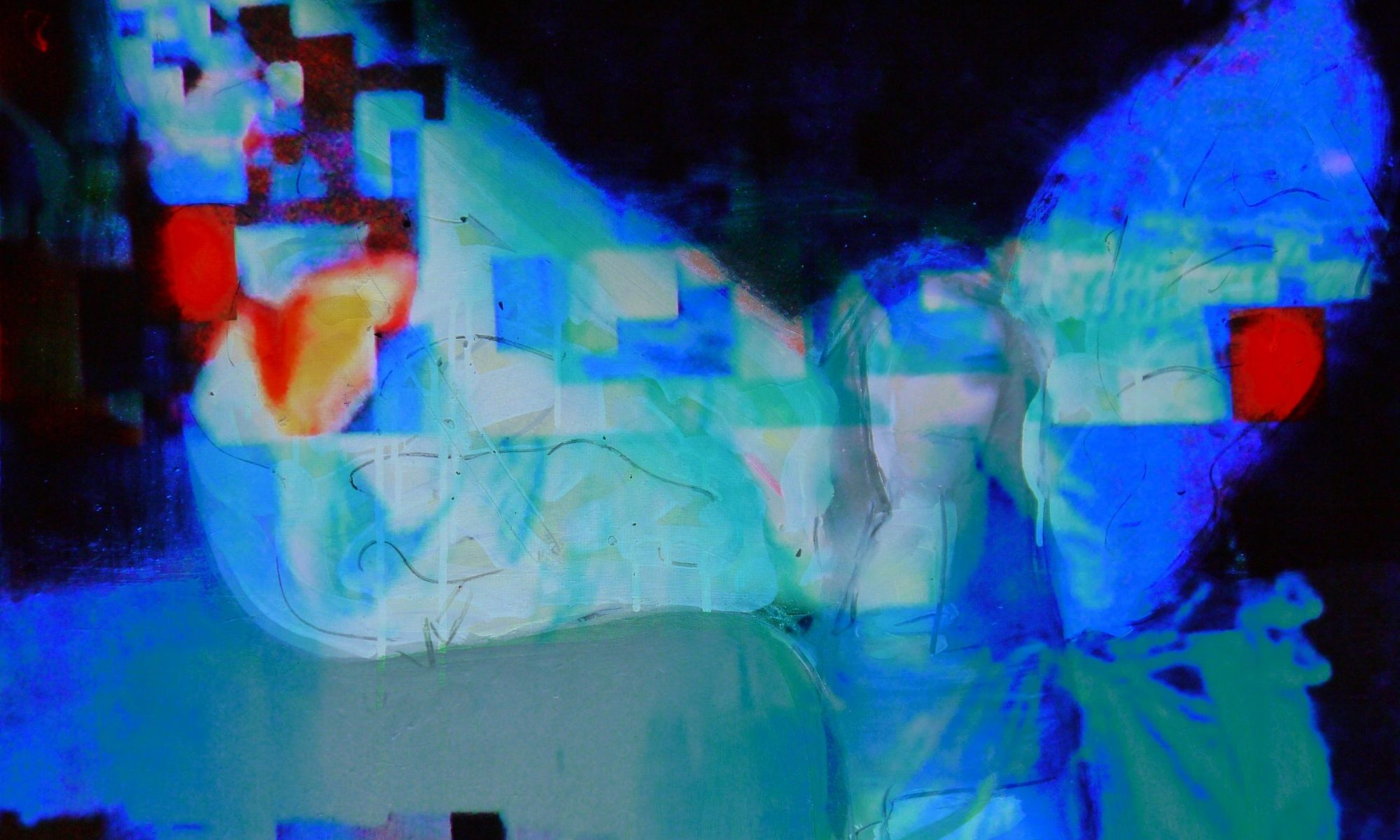Photo Painting
Photo painting refers to the original meaning of the word photography, which means nothing more than “painting with light”.
Technically, we make photo painting, that is a combination of painting and photography in which several artists work together in a creative process.
The result are photo paintings. Photo paintings are photographs that consist of many layers. Each layer reflects a processing step. Each processing step is documented photographically and forms the basis for the next. In this way, the work is built up step by step. It is up to the artist to decide which technique is to be used to process the layer. Photo painting unites all the techniques used to create a photographic image.
In terms of content, the concept of collaboration is decisive for us. Working together with other artists always opens up new perspectives. The examination of existing works is also an integral part. For our current exhibition we have developed Goethe’s Faust into the present.
The process of making
In the joint works of the photographer Horst Gatscher and the painter Dirk von Burgsdorff, photography is the final word. The special method that both artists developed for their “Photo Paintings” consists of a sequence of painterly designs and the photographic gaze directed at them. The possibilities of illumination, viewing angle and exposure time are used to create the form. Analogue technology is usually preferred, sometimes the digital camera is used. The latter, however, is done without post-processing. During their examination of different means of representation, the space of action of both artists expands. The painter sees his picture with a photographic gaze, the photographer the effect of brush and paint. At the end there is a photo painting that contains the artistic decisions of the painter and the photographer in equal measure. The process can begin with a painting that Dirk von Burgsdorff develops on a wall in his shared studio. A graffito that the artists see during a stay in New York can also be included in a photo image. In this case, the choice of section, light and perspective begins on site. After the completion of the creation process, the parts of painting and photography become visible to varying degrees. On examples such as the photo painting “Sunken”, however, the conditions seem to be transparent.
In the series “Whose Messenger” the angel has his dramatic appearance as mediator between God and man. The origin of the supernatural beings lies in darkness, and so wings and faces emerge from a black background in the works. For this subject, the scenario for the photographic and painterly processing had to be created, feathers mounted, cloths hung as a coloured background. The female models for the respective angel became further participants in the process of creating the picture. On “Whose Messenger III” a blue strip of light emerges from the black next to the woman’s head and bright wings. With this painting of a different kind Horst Gatscher emphasizes the atmosphere of the unreal. Dirk von Burgsdorff and Horst Gatscher playfully expand the areas of painting and photography and thus question their usual characterization.
Dr. Annemarie Zeiller (translated from German)
Interactions
When looking at a painterly representation, the viewer automatically tries to fathom and harmonize the parts of what he has seen and what he suspects. Intuitively, a fictional element is subordinated to painting, while in photography the documentary character is assumed, giving it more faith. With photo paintings we pursue a photographic approach. Not through the intention to create photographic realism, but through the investigation of the interrelations between photographic and painterly perception. We combine photographic, painterly and processual elements on an equal footing. This increases the complexity and unpredictability of the creation process. We bring both, often simultaneously, our ideas and points of view into the creation of the photo painting. The result is often surprising and no longer allows a clear classification. Thus, photography apparently loses its documentary character and we conquer the realm of fiction with it.
Since neither analogue nor digital photo pictures are reworked by us, they can claim exactly this documenting element for themselves – they document, however, not reality but their creation process and the interaction of the participating artists.
Dirk von Burgsdorff & Horst Gatscher

